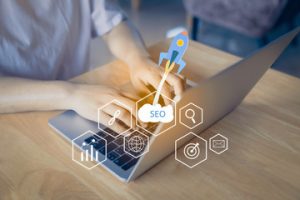Gutters channel rainwater away from homes, preventing water infiltration that causes leaking roofs and foundation damage. However, gutter solutions must be properly installed and regularly maintained to ensure proper functioning.
Gutter solutions also prevent clogging, leading to overflow and damaging soil washout around foundations. They also enhance home exteriors, improving curb appeal and overall functionality. Contact Charleston Gutter Solutions now!

A gutter system plays a vital role in managing water flow around and away from your home. Without a functional gutter system, your home is susceptible to damage from rainwater. Clogged and overflowing gutters are not only unsightly but can cause mold growth, rotting wood, and flooding in basements. Gutter solutions help keep water flowing properly to avoid these problems and safeguard your home’s investment.
Gutter systems can be designed to fit your needs, whether you need a new system or an upgrade for your current gutters. A professional will install your gutter solution with care and precision, ensuring it works correctly. The proper size and positioning of downspouts is critical to an efficient gutter system. Errors like disregarding the slope of your property or placing downspouts too close to the house can lead to water damage and clogging.
In addition to directing water away from your home, the right gutter solution can also protect your landscape. A downspout that is pointed at your driveway or the street can pick up trash, sediment, phosphorus, nitrogen, chloride, and fecal coliform bacteria during a rainstorm. This can damage your landscaping and harm the environment.
Your gutter downspouts should be redirected to the center of your yard or to a storm drain to minimize damage and pollution. The easiest way to do this is with a corrugated drainage pipe capped with a rainwater emitter, which can easily be installed by you or your contractor. Another option is a drainage well, which is constructed by digging a hole and filling it with gravel. This underground solution is aesthetically pleasing and can easily divert water away from your foundation.
You can also invest in a rain-harvesting tank, which uses a nozzle to direct the water from your downspouts into a storage tank beneath your roof. The tank can then be used for gardening or irrigation and helps preserve the environment. Gutter solutions can also include sensors that monitor the flow of water to detect obstructions or anomalies. These smart gutter systems can alert you of a problem before it becomes a big issue.
Aesthetics
Gutters can be much more than a functional afterthought. In fact, they can become an integral design element of your home’s architecture. Innovative gutter solutions – like hidden gutters, copper accents, rain chains, gutter gardens, decorative covers, and rainwater harvesting systems — elevate aesthetics while addressing your home’s water management needs.
Gutter solutions, when carefully integrated into a home’s design ethos, can amplify its overall visual appeal and enhance the value of your property. The selection process should consider various aspects, including material options, color, and style. Expert gutter installation also ensures that your new gutter system seamlessly integrates into your home’s existing architectural design.
Seamless gutters, for example, are cut on-site during installation to ensure a precise fit and a streamlined aesthetic that eliminates unsightly seams. In addition, seamless gutters can be custom-colored to match or complement your home’s exterior palette, adding a touch of style that elevates curb appeal and maximizes function.
For residences with historical significance or distinctive architectural elements, bespoke gutter accents can be designed to reflect these features, reinforcing the home’s character and heritage. Low-voltage lighting can also elevate gutter aesthetics by casting a soft glow on pathways and landscaping. This adds ambiance and safety while accentuating architectural features and highlighting the natural beauty of your home’s architecture after dusk. Moreover, gutter maintenance, when performed regularly, can prevent clogs and enhance gutter longevity, increasing the overall efficiency and aesthetics of your gutter system. Gutter solutions can also be customized to address specific water drainage problems, reducing your home’s energy costs and improving its resale value. For more information, contact an experienced gutter specialist to discuss your options. They’ll be happy to share their knowledge and expertise to help you select the best gutter solution for your needs.
Longevity
Gutters are vital guardians for your home, shielding its foundation and walls from water damage. Their skillful redirection of rainwater prevents puddle buildup that can seep into crawl spaces and basements, where moisture can lead to mold, mildew, or structural issues. Custom gutter solutions are precisely measured and expertly installed to ensure proper water flow, mitigating the risk of foundation problems and minimizing maintenance requirements. When paired with gutter covers, such as leaf guards, these durable gutter solutions further mitigate maintenance needs by preventing debris blockage.
Choosing gutter materials with long lifespans and a design that fits with the architectural style of your home is key to optimizing their performance. Durable options like copper, aluminum, and seamless gutters feature a long lifespan and are well-suited for the California climate. In addition, ensuring that your gutters are regularly cleaned and sealed for leaks will help to prolong their lifespan and enhance their performance.
Gutter systems that are well-maintained and properly positioned around your house can minimize energy costs, as they reduce the strain on heating or cooling systems by maintaining consistent soil moisture levels. Moreover, the sanitary protection provided by your gutter system inhibits pests and the spread of fungi such as mold and mildew, preserving a healthy, breathable environment.
The interplay between gutter health and roof longevity is essential to the tenacity of your roofing structure, extending its life and enhancing the architectural beauty of your property. Maintaining your gutters by prioritizing routine upkeep and heeding professional guidance is key to protecting your investment and safeguarding the sanctity of your living space.
Maintenance
A gutter system that is well-maintained and professionally installed can protect your home for years to come. Gutter solutions like gutter guards, seamless gutters, and heated systems help to prevent clogs and the subsequent damage they can cause. In addition to the protection they offer, these systems can save homeowners the hassle of climbing ladders and navigating the treacherous terrain that is gutter cleaning.
Whether you have existing gutters or want to protect your new property, you can count on the team at Gutter Solutions for expert installation and maintenance. Their experts can assess each home and recommend the appropriate gutter solution to ensure optimal performance. They are also fully licensed and insured, ensuring your safety while they work on your roof.
The importance of gutter repair and maintenance cannot be overstated. Even small leaks or sagging gutters can develop into significant problems, leading to costly structural damage. Homeowners often overlook these warning signs, but a professional service can mend them and make the necessary adjustments to redirect water flow away from the foundation of the house.
When selecting a gutter repair service, you should choose one with a proven track record and glowing customer testimonials. Look for a company that offers both repair and prevention services, as their insights into the expected and unforeseen challenges of gutter maintenance can reduce both cost and stress in the long run.
A quality gutter solution protects your property from moisture, preventing water damage and increasing its value. Gutter Solutions is dedicated to helping you maintain your home and ensure its longevity. Contact them today to schedule a free estimate for gutter repairs or replacement. With their cutting-edge technology, custom-fit solutions, and experienced professionals, they are the ideal choice for protecting your most valuable investment.








